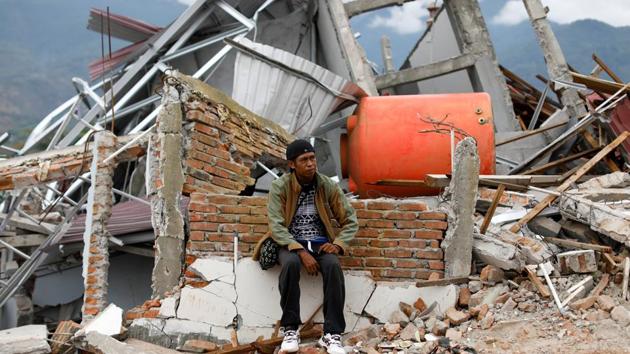How science can help us prepare for disasters
Advances in satellite, computer and communication systems are now enabling alerts on cyclones, floods and the like. With reasonable lead-time, alerts and evacuation can be done for these types of disasters.
There seem to be an increase in frequency of natural disasters in recent times. We hear about cyclones, volcanic eruptions, earthquakes, floods and landslides much more often. Look at the last two decades of the history of disasters in India. 2001, the Bhuj earthquake; 2004, the tsunami; 2013, Uttarakhand flood, 2018, floods in Kerala. All these events took a heavy toll on life and property. What is common to these events is that the anthropogenic influences have amplified the damage. Unscientific land use, inappropriate constructions and climate change are certainly contributing to the severity of hazards. In a world where the demand far outweighs the resources, the impact of hazards is only likely to increase. Thus, there needs to be better preparedness, a higher level of comprehension of the kind of hazards that might take place and the ability to mitigate damages. Advances in satellite, computer and communication systems are now enabling alerts on cyclones, floods and the like. With reasonable lead-time, alerts and evacuation can be done for these types of disasters. On the other hand, earthquakes remain unpredictable and give no warning or any time for evacuation.

As a person working on earthquakes, I have often been asked why these phenomena cannot be predicted, unlike cyclones, floods or volcanic eruptions. My explanation that the processes leading to the earthquakes occur in the deep recesses of the earth, and are beyond the realm of human observation, was rarely well received. However, many were willing to accept that earthquakes cannot be predicted and they do not blame the scientists when an earthquake occurred without notice. However, the reactions are sharper when a wrong prediction is made. That is what happened in L’Aqila, Italy, when a moderate earthquake killed more than 300 people and destroyed the whole city, in 2009. In a judicial trial that followed, the team of experts (six of them including seismologists, volcanologists, earthquake engineers and a public official) was found guilty and was given six-year jail. The judge pronounced them guilty for their unfounded assurances that an earthquake will not happen which led to people going back to their homes. Those jailed were acquitted later, but this event was surely a jolt on the science earthquake prediction.
While the world did not hear much about earthquake predictions in the subsequent years, two US scientists, including Prof. Roger Bilham of Colorado University, have predicted an increase in devastating earthquakes during 2018. In a research paper published in August 2017 they noted that a change in the speed of the Earth’s rotation could trigger intense seismic activity, particularly in the heavily populated tropical regions. I am not clear about the underlying mechanism that links the milliseconds change during a day to an increase in seismic activity. The century long does show a correspondence between the increase in seismic activity around the world, with the slow down in the earth’s rotation. Further they predicted increased activity in the tropical regions, which are also densely populated. Although they have not specifically mentioned India, with the Himalaya bordering it, this part of Asia is one of the most seismically active regions.
Talking of the Himalaya, there is another prediction, by Roger Bilham. The prediction, made in 2001, based on scientific data, was that the Garhwal-Kumaon Himalaya is ready for a great earthquake, any time. It has not happened, but if it does, how well prepared are we to face it? History tells us that large earthquakes in the Himalaya have severely affected the Gangetic plains. Given the large density of population and extent of development in the plains, how should we plan for damage mitigation? Perhaps the Disaster Management Authority needs to focus their attention on how to reduce the impact of a future earthquake. A map showing the level of high risk is not enough. There need to be plans for mapping the vulnerable zones and provide advisories for future constructions, retrofitting etc. It is also important to create awareness among the citizens and let them know that there is an enemy sleeping by their side, who can wake up anytime. A known enemy is far easier to deal with, than an unknown and unexpected.
Kusala Rajendran is a professor at the Centre for Earth Sciences, Indian Institute of Science, Bengaluru
The views expressed are personal






